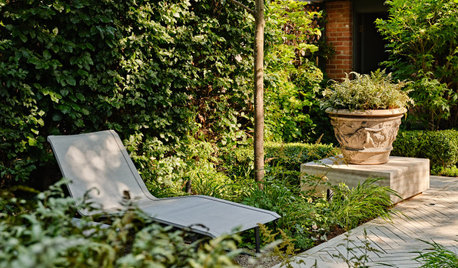Cause of anemic Tsuga Canadensis - no edelgid on tree
poaky1
12 years ago
Related Stories

LANDSCAPE DESIGNHow to Create a Beautiful Shade Garden
Turn the cool, shady spot in your garden into your own quiet oasis
Full StoryAs the title says, I've tried Canadian Hemlock (no cultivar) in my yard and they pale and decline within a couple weeks and I've never seen the whooly adelgid on them. I have ordered 2 Tsuga Heterophylla hoping for better success. My soil is well drained where I've tried them and has a PH of 6.7. There haven't been any soil deficiencies on pro soil tests.



whaas_5a
dcsteg
Related Professionals
Danbury Landscape Architects & Landscape Designers · Derry Landscape Architects & Landscape Designers · Wrentham Landscape Architects & Landscape Designers · Edmond Landscape Architects & Landscape Designers · Manorville Landscape Architects & Landscape Designers · Saint Matthews Landscape Architects & Landscape Designers · Caldwell Landscape Contractors · Chesapeake Ranch Estates Landscape Contractors · Conroe Landscape Contractors · El Sobrante Landscape Contractors · Fort Mill Landscape Contractors · La Mirada Landscape Contractors · Nashua Landscape Contractors · Palos Verdes Estates Landscape Contractors · Tyngsboro Landscape Contractorsken_adrian Adrian MI cold Z5
poaky1Original Author
poaky1Original Author
wisconsitom
jimbobfeeny
wisconsitom
poaky1Original Author
poaky1Original Author
wisconsitom
jimbobfeeny
carl2009
poaky1Original Author
poaky1Original Author
poaky1Original Author
coniferjoy
poaky1Original Author
coniferjoy
gardener365
poaky1Original Author
wisconsitom
poaky1Original Author
poaky1Original Author
bengz6westmd
User
poaky1Original Author
ken_adrian Adrian MI cold Z5
poaky1Original Author